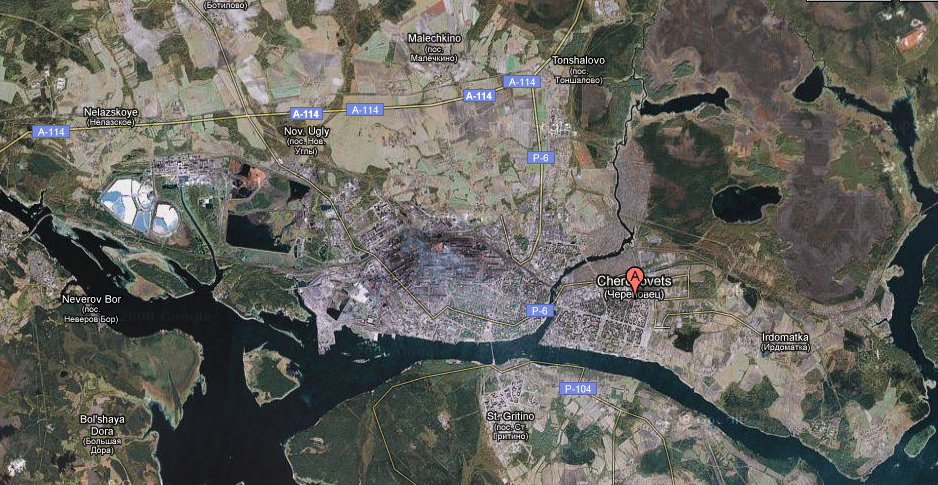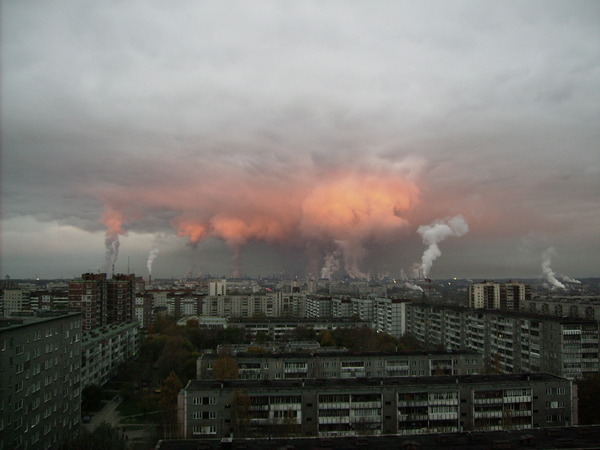Great Ted Talk I watched today:
My dad is proud owner of a second Epson printer… Was a proud owner until the time to buy ink came. He went to the store and found out that the cartridges for this printer are much more expensive than a new better model of Epson printer. Some may argue that printers come with half-empty cartridges; however, this doesn’t apply to Epson. They proudly advertise (and really put) cartridges full of ink. However, every single sales person in BestBuy, London Drugs, FutureShop, Staples said the same thing: more and more people don’t buy ink for printers. They buy new printers, and, of course, they dump the old ones. And when you think of it, it is a huge chunk of plastic that’s not even considered to be biodegradable or anything close to it. So, what should you do?
An article here talks about many ways to recycle printers. Although they talk about HP printers, it is fair to say that their recycling methods apply to all printers. Let’s see…
1. Donate your old HP printers to schools or organizations. This is a great way to recycle printers and help others, besides. Search online for organizations or schools that accept donations of printers, laptops, educational materials or other equipment. Hewlett-Packard has an existing partnership with the National Cristina Foundation, which distributes computers, laptops, printers, printer ink cartridges and other equipment to charities, schools and public agencies in U.S. and Canada.
2. Recycle your old HP Deskjet, Laserjet or Officejet printers. There are many different agencies and organizations within your area that can help you recycle printers. The National Center for Electronics Recycling (NCER) accepts old HP printers and even HP ink cartridges, which are then evaluated and reused or recycled. The NCER’s website also offers tips and lists down the different recycling areas in the U.S.
3. Ask friend or relatives and see if they can use your old HP printers. In most cases, you need to get rid of your old printer, not because it’s busted but because you’ve upgraded to a newer model. If your HP Deskjet or Laserjet is still in good condition, email your friends or relatives and sell it for a very, very low price. You might even want to consider giving it away for free. It’s a much better option than just dumping it in the trash or letting it sit, unused, in your home.
4. Trade in your old HP printers. You can visit the HP website and check for trade-in options in HP centers around the world. HP accepts trade-ins of old printers (even those from other brands) for newer models—all you have to do is send your old printer, add a little cash and voila! You’ve got a brand new, up-to-date HP printer. There are also other websites and shops that offer good deals and trade-ins for old printers, like Staples.
5. Search for websites or junk shops that offer cash for old printers. There are numerous ads in Craigslist that offer different amounts of cash for your old HP printers or even oldink cartridges. Even Hewlett-Packard site can pay your company for old equipment that you no longer want or need. Old printers that are bought are usually refurbished, fixed and either resold at lower prices or donated to charities.
It turns out that Staples and Office Depot have recycling and trade in programs. Why don’t they advertise them? However, it is not too easy: you have to pay $10 dollars to get it recycled or sent to the manufacturer. Surprisingly, Epson itself has a recycling program information about which is nowhere to be found on the box or on the printer itself. Oh, yes, I forgot: the box itself is filled with plastic cushioning that says it is not reusable.
In class we talked about fridges recycling and washers, how it is inconvenient to recycle them: the same applies to printers and especially laser printers toners of which are very hazardous. I think this is a possible business proposition: organize recycling services at certain cost. For example, the consumer would go to a website, apply for pick up of a device (be it fridge or printer) and pay with a card online. He would place the device outside of the house and the company would pick it up. Maybe there will be car emissions concern; however, it may be better than dumped printer. The company could deal with trade-ins (massive trade-ins) or donations to schools or even other countries. I wonder if there is any business like this.
I was astounded when I saw this blog post today. The use in park is fantastic. Sounds Gattaka-like (or any other sci-fi movie you can think of). I also thought that this can be used for large buildings with large roof surface. This can apply to warehouses for example. The question of course is how heavy are these things, but they don’t look like they are too heavy. Putting these “windstalks” on the roofs will help save space and energy at the same time. Firms even could rent out their roofs to put these things for someone else to use. It is also possible to put these stalks for street lamp poles. It would wobble and generate energy to light up that lamp… Of course it all boils down to the cost benefit, but Gina’s right – this gets you pretty exited!
from Russia with… smoke
We often talk about sustainability initiatives in developed countries in Africa and in South America. Some of countries on those continents are in terrible conditions varying from war to basic sustainability issues. More developed countries came to help and provide support in different ways. I really feel for those people in many aspects because I am from a country that needs such help. My homeland spreads vary large territory and has extremely diverse environment. Maybe as diverse as in some tropical countries. I have lived there for 19 years until my family moved to Canada 3 years ago and I have some awful things that people do to the environment. During this course I was not able to find a topic that I know well that’s about sustainability. During this week I want to tell as much as I can about my country’s sustainability issues in homes to continue this and get some feedback from you and thoughts on solving these issues. I wan to write this not because I want to tell how disgusting the place is. I love it regardless of its shape because it my home. For the same reason it hurts to see it this way and that’s why I want to share it with you.
The first post will be about my home town: Cherepovets, Russia. If you like to go in detail with things, go to the Google Maps and type in “Cherepovets, Russia”. Get to the “Satellite” view for maps and observe.
My hometown has 3 large plants. Two of them are chemical producing pretty much any fertilizer that has ever been used in agriculture or most chemicals used for industrial purposes. The third plant is called Severstal. I is a steel plant that produces many metal derivatives. This plant is owned by the person who is one of the billionaires on the Forbes list: Alexey Mordashov who used to have $12b before the recession and who was left with 3 after it. Those three plants are the reason why there is a brown spot over 2/3 of Cherepovets when you look on it from space (google maps).
Here is how this plant looks sometimes… quite often actually.
The fact is that there are no filters on those pipes. They were turned off after the recession because it is too costly to run them. Interestingly, the plant was supposedly build in such way that the smoke should go away from the city. I used to think so. However, when I come to Cherepovets in the summer every year, I feel dizzy for a day or two because the smoke and car exhausts is in the air. And it’s not even windy yet.
to be continued…
Global or local
One of the speakers on the International Business conference brought up an interesting question. There was a speaker from General Electric and she talked about its company’s work more that 100 countries in the world. With their program ecomagination they try to fix environmental and social issues in those countries. And one student asked whether this global focus in detrimental to the local communities? He asked that maybe we focus too much on the issues abroad and tend to miss up on some local problems. And GE representative agreed that this is a concern among various social organizations that there is too much resources that are going abroad with efforts to cut costs through outsourcing that the local issues blur and don’t get as much attention. This being said, GE tries to address the issues of local production versus international. They follow IBM global solutions on this issues saying that “insourcing” can be done. As we discussed in class companies work with foreign communities which leads to high environmental damage, but also hurts local communities because there is not as much jobs and education provided to them. GE mentioned that sustainability is not feasible to achieve in a certain area due to economies of scale. The issue should be addressed globally.
This is another reason why companies like GE and Wal-Mart are important to sustainable business development: they have enough resources to (1) absorb costs of sustainability and (2) they know about local issues and global issues, social and ecological, often more that a governments country because they operate locally and abroad simultaneously.
Does IKEA like waste?
I ran into this ad recently and was very confused about its message. Take a look for yourself. This is from 2005.

Maybe I am being too picky and this ad is just about humor and doesn’t have anything to do with waste. However, it feels like the message was to dump the old stuff on the street and get the new goods from IKEA, then do it again and again. It doesn’t look very sustainable. This is strange message because today IKEA was fighting for being a sustainable company. If you look at their “responsibility” section of their website they claim many “sustainable” activities. For example, they are funding massive tree planting across America in 2006, a year after that ad. This could be a company that suddenly made a rapid change from “unsustainability” to “sustainability”. If that’s so, then one can doubt their motives in making this switch. If you didn’t believe in it a year ago, how could you start believing in sustainability and social responsibility a year after?
from Discovery News
“Investors led by technology giant Google on Tuesday announced a five billion-dollar project to power the US East Coast with wind from the Atlantic Ocean, in an ambitious bid to spur alternative energy.
The project would set up offshore wind turbines and a new transmission grid stretching 350 miles (565 kilometers) from New Jersey to Virginia, the most densely populated part of the United States which suffered blackouts in 2003.”
Full article: http://news.discovery.com/tech/google-funds-offshore-wind-power.html
It is always interesting to see how companies participate in activities that are completely unrelated to their business. However, seeing Google do that is very likely to encourage other companies in the same industry to act in similar ways. In its core the company is not only hi-tech, but it is also sustainability oriented. In its CSR the very first line states:
Since its founding, Google has been firmly committed to active philanthropy and to addressing the global challenges of climate change, education and poverty alleviation.
Source: Google’s CSR.
Vehicle 2 Grid electric car
Professor Willet Kempton of the University of Delaware developed a car that can give electricity to the house or to power up things that you need like a stove or a computer in it. You can also charge it from the plug to keep it running. The car puts in 12kwt into the the professor’s house which is more than sufficient to run an average U.S. home with average electricity use of 1.5kWh per hour. Thus, everything in the professor’s house runs off the car as well as a few of his neighbors’ houses.
Unfortunately, Discovery News don’t allow to insert videos, but this is a video about a very unique technology. Therefore, the video about this car can be found here: http://news.discovery.com/videos/tech-electric-car-feeds-grid.html
Let’s hope we can get more of these soon. Did you see how fast the car accelerates on the parking lot?
Picture Source: http://www.engadget.com/2009/01/21/city-of-newark-delaware-implement-vehicle-to-grid-trials/
Hello reader of my humble blog,
Without long introduction I want to share some thoughts about sustainability marketing (SM). Feel free to correct me at any point.
From what I understood so far, on of the most important purposes of SM is to shape people’s minds to ‘be green’ which, of course, means many things. However, when you address the same thing to firms, it becomes a lot more difficult. Marketing seems to be a very small portion of the “going green” machine, and it can affect mostly consumers, but not so much the producers. In order to change companies and their products it requires cooperation of engineers, accountants, business process re-engineering specialists, etc. Some companies can change quickly, but the bigger ones can’t. And the bigger ones are usually the most harmful ones.
Also, the big part of SM is good economic welfare. There are 20 countries (G20) in the world that can actually afford sustainability movements, but the rest don’t have resources for that. There are issues such as hunger, lack of jobs, sweatshops, etc., enormous amount of issues that could not be resolved for years. Those countries are so far behind that they don’t want to think about sustainability, they want to feed themselves first.
Sustainability as a concept seems big in Canada. I would assume it is big in the US and Europe. I don’t know how big though. However, even here it varies depending on the area. It is like Apple Macintosh computers. They make a lot of noise when the come out, they are great, reliable, good in the long-run, but they are still a tine share of the world computer market. Some people only heard of them, but don’t know what they are or know them only by the iPhone. Just like sustainability is know mainly by the CO2 emissions for example.
That’s the initial thought. I hope later it develops in something more specific.





